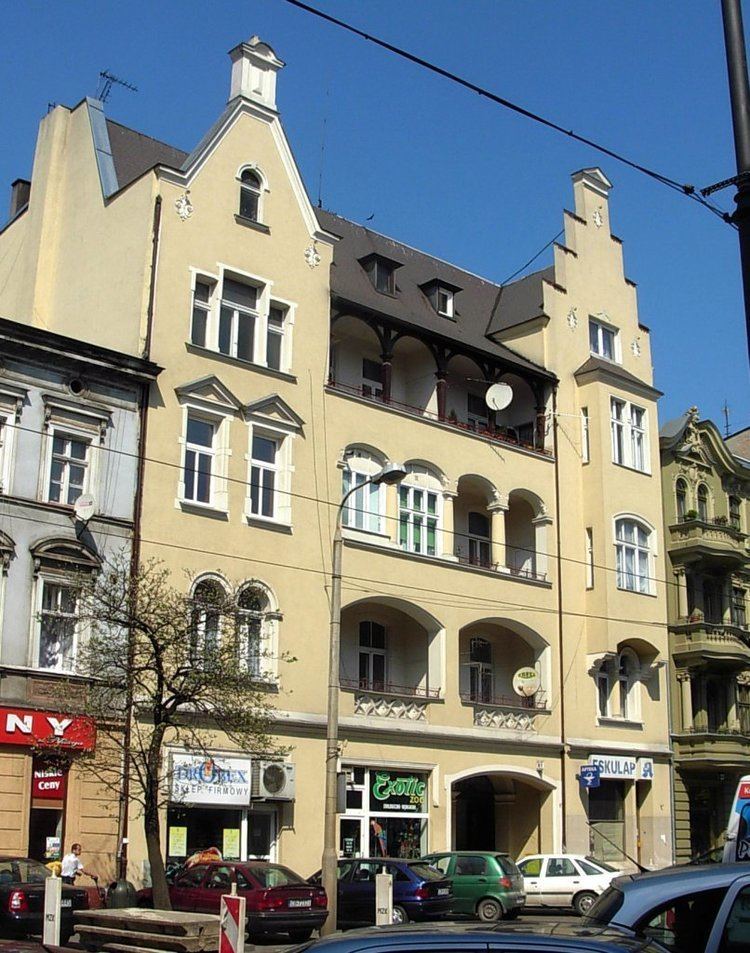Type Tenement Client Carl Bradtke Opened 1899 Architectural style Historicism Architect Fritz Weidner | Completed 1899 Floor count 4 Floors 4 Groundbreaking 1898 | |
 | ||
Location Gdanska Street 91, Bydgoszcz, Poland Similar Villa Hugo Hecht in Bydgoszcz, Theonia Reichhardt House in, Hugo Hecht tenement, Julius Grey house in Bydgoszcz, Alexander Timm House | ||
The Tenement at Gdanska street 91 is a habitation building located at Gdańska Street N°91, in Bydgoszcz.
Contents
Location
The building stands on the western side of Gdańska Street, between Świętojańska Street and Chocimska street.
It stands close to remarkable tenements in the same street:
History
The house was built in 1897-1898 by the architect Fritz Weidner, a German builder who came to Bydgoszcz at the end of the 19th century, and had a frantic building activity in the city between 1896 and 1914. The architect lived in the tenement he built at Gdanska 34 from 1912 on.
In the same area, Fritz Weidner built houses at the following addresses:
- Mix Ernst tenement and movie theatre at Gdanska St. 10 in 1905;
- Thomas Frankowski Tenement at Gdanska St. 28 in 1897;
- George Sikorski Tenement at Gdańska St. 31, in 1906;
- Max Rosental Tenement at Gdanska St. 42 in 1905;
- Ernst Bartsch tenement at Gdańska St.79, in 1898;
- House at Freedom Square 3, in 1903.
The tenement at then Danzigerstraße 52, was first owned by a master stonecutter, Carl Bradtke who lived until 1898 in Dworcowa street (German: Bahnofstrasse) before moving to his new house in 1899. He still kept his shop of "Marble commodities" at Bahnofstrasse 52 until the start of World War I. Carl Bradtke also commissioned another local architect, Joseph Święcicki, for the construction of a nearby tenement at N°93.
Features
The house presents forms of prussian Historicism, at a transition time from the Eclecticism to Secession movement. The facade has gables with different forms, bay windows, loggias and various shaped windows.
The main frontage is flanked with triangular topped gables. The middle section play on symmetry, through the network of arcades and open loggias, while the upper part is purposefully designed asymmetrically.
This design is a choice undertaken by Fritz Weidner: to part from stuccoes for decorative arrangement as architectural elements.
Interiors have noteworthy elements, especially the ceiling in hallway and entrance adorned with flower stuccoes.
The building shows similarity with a neighbouring one, at N°79, also designed by Fritz Weidner.
